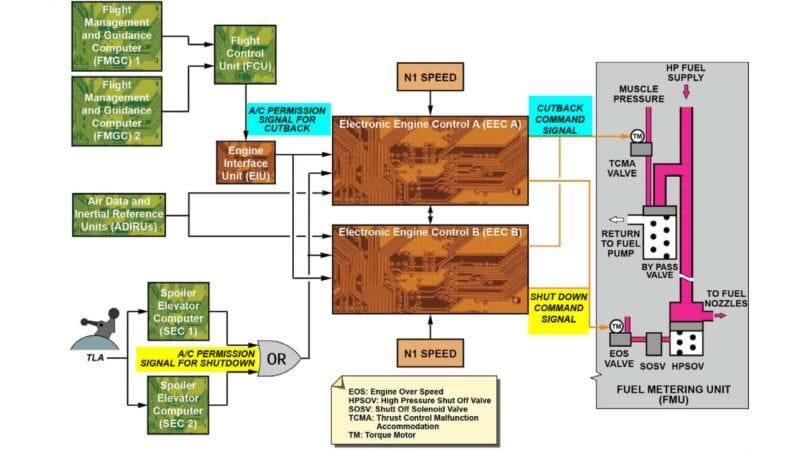- GRAY LESSONS
- Posts
- The Open‐for‐Terrorism Switch: When Design Fails in Silence
The Open‐for‐Terrorism Switch: When Design Fails in Silence
Modern aircraft—Boeing, Airbus, Embraer, you name it—are not lawnmowers.The fuel control system is governed by FADEC (Full Authority Digital Engine Control) and EEC (Electronic Engine Control) logic.

Aviation safety is built on blood and lessons learned. Every system, every switch, every interlock is supposed to exist because of decades of engineering rigor and the unforgiving laws of flight.
The issue is not that a fuel cut‑off switch exists – such a switch is essential in emergencies like fires or engine failures.
The issue is that if this switch can be activated in flight with no layered interlocks, no guarded logic, and no system cross‑checks, then what we have is effectively an open‑for‑terrorism switch.
Yet here we are, reading headlines like:
“Air India pilot was struggling following mother’s death and separated from wife before ‘he turned off fuel switches’.”
Let’s pause right here.
Because as an engineer and as someone who believes in accountability, I cannot read this without calling it out:
This headline is a failure of journalism and a betrayal of public trust.
It reduces a highly complex technical event into a sensationalist soap opera about one individual’s grief.
Worse, it implies something far more troubling from a design standpoint:
Are we really saying that in 2025, a commercial jet allows a single human to simply flick a switch mid‑flight and bring down hundreds of lives?
The Engineering Reality
Modern aircraft—Boeing, Airbus, Embraer, you name it—are not lawnmowers.
The fuel control system is governed by FADEC (Full Authority Digital Engine Control) and EEC (Electronic Engine Control) logic.
No single lever directly controls fuel flow.
There are interlocks, guards, detents, and dual-channel redundancy.
FAA/EASA certification (FAR/JAR 25.1309) forbids a single action from causing a catastrophic event.
Fire handles and cutoff switches are physically guarded and software‑protected.
In short:
A suicidal pilot cannot simply flip one switch and shut down engines. Not without bypassing multiple layers of logic and safety.
If an accident investigation concludes otherwise, then this isn’t about a pilot’s mental state.
It is about a system design flaw, a maintenance bypass, or a regulatory failure.
When Headlines Mislead
Publishing unverified “he turned off fuel switches” statements, before an investigation is complete, is not just bad journalism—it is dangerous. It erodes trust in aviation and stigmatizes mental health without evidence.
The Airline Pilots’ Association of India itself raised concerns:
Lack of transparency
Premature leaks to media
Reports shared without official attribution
And yet, certain media outlets rush to print the most dramatic angle possible.
When Design Fails in Silence
If such a switch truly exists—one that can kill engines in flight with no secondary confirmation—then that is a design failure.
And design failures don’t make headlines because they are invisible until tragedy exposes them.
We should be asking:
Why did system interlocks not prevent the command?
Were both EEC channels truly independent?
Did maintenance leave a bypass engaged?
Did certification processes overlook a single‑point‑of‑failure?
A Call for Accountability
To regulators: revisit certification assumptions.
To manufacturers: audit your failure‑mode analyses.
To investigators: tell the full story, not just the human angle.
To journalists: stop fueling fear with half‑truths.
Aviation’s safety record is built on transparency and learning from every failure. Let us not regress to a world where design flaws hide behind convenient scapegoats.
Final Word
I write this not to assign blame, but to demand better—better engineering, better reporting, and better respect for the lives lost.
A switch that can silently undo decades of safety architecture should not exist.
If it does, it must be redesigned, certified, and explained publicly.
Because in aviation, silence kills more than noise ever will.
Image and technical inspiration credit:
With respect and gratitude to Captain Firas Naser, Airbus A320neo pilot and aviation professional, whose publicly shared cockpit photo and insights inspired this discussion.
See his post here.
– Mahendra Pratap Singh
Engineer | Builder | Eternal Student of Systems that Should Never Fail